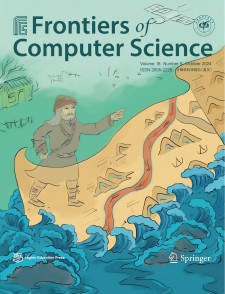头骨,头皮和塞米诺尔人
IF 4.6
3区 计算机科学
Q2 COMPUTER SCIENCE, INFORMATION SYSTEMS
Frontiers of Computer Science
Pub Date : 2018-08-13
DOI:10.5149/NORTHCAROLINA/9781469640471.003.0007
引用次数: 0
摘要
这一章的重点是第二次塞米诺尔战争(1835-1842),以及白人和当地人如何通过对彼此死者的暴力来发展关于塞米诺尔人作为一个独特种族的新知识。一方面,欧美人希望通过寻找当地的头骨,为塞米诺尔人是一个被明确界定的种族的说法增加科学的合法性,认为塞米诺尔人有暴力倾向,与佛罗里达没有祖先联系,因此有理由将他们驱逐出境。另一方面,白色头皮的收集和流通加强了塞米诺尔人对自己作为一个独特民族的认识,使他们能够重建完整的社区——一个将生者、多种族死者和佛罗里达土地结合在一起的社区——尽管有战争的创伤。本文章由计算机程序翻译,如有差异,请以英文原文为准。
Skulls, Scalps, and Seminoles
This chapter focuses on the Second Seminole War (1835–1842) and how whites and natives both developed new knowledge about the Seminoles as a unique ethnic group through violence against each other’s dead. On the one hand, Euro-Americans looked to native skulls to add scientific legitimacy to assertions that the Seminoles were a clearly defined ethnicity whose supposed predisposition for violence and lack of ancestral bonds to Florida justified their removal. On the other hand, the collection and circulation of white scalps strengthened the Seminoles’ understanding of themselves as a distinct people and allowed them to rebuild complete communities—ones that integrated the living, the multiethnic dead, and Floridian land—despite the trauma of the war.
求助全文
通过发布文献求助,成功后即可免费获取论文全文。
去求助
来源期刊

Frontiers of Computer Science
COMPUTER SCIENCE, INFORMATION SYSTEMS-COMPUTER SCIENCE, SOFTWARE ENGINEERING
CiteScore
8.60
自引率
2.40%
发文量
799
审稿时长
6-12 weeks
期刊介绍:
Frontiers of Computer Science aims to provide a forum for the publication of peer-reviewed papers to promote rapid communication and exchange between computer scientists. The journal publishes research papers and review articles in a wide range of topics, including: architecture, software, artificial intelligence, theoretical computer science, networks and communication, information systems, multimedia and graphics, information security, interdisciplinary, etc. The journal especially encourages papers from new emerging and multidisciplinary areas, as well as papers reflecting the international trends of research and development and on special topics reporting progress made by Chinese computer scientists.
 求助内容:
求助内容: 应助结果提醒方式:
应助结果提醒方式:


